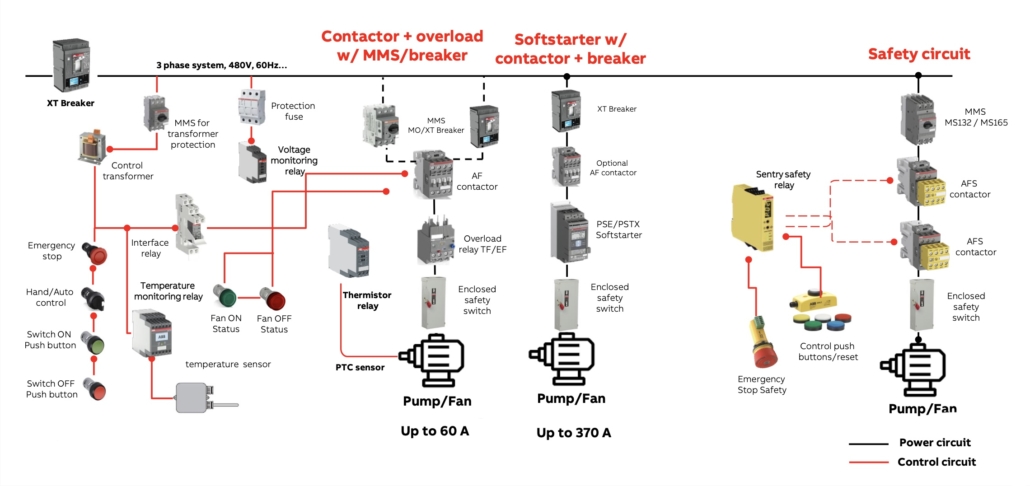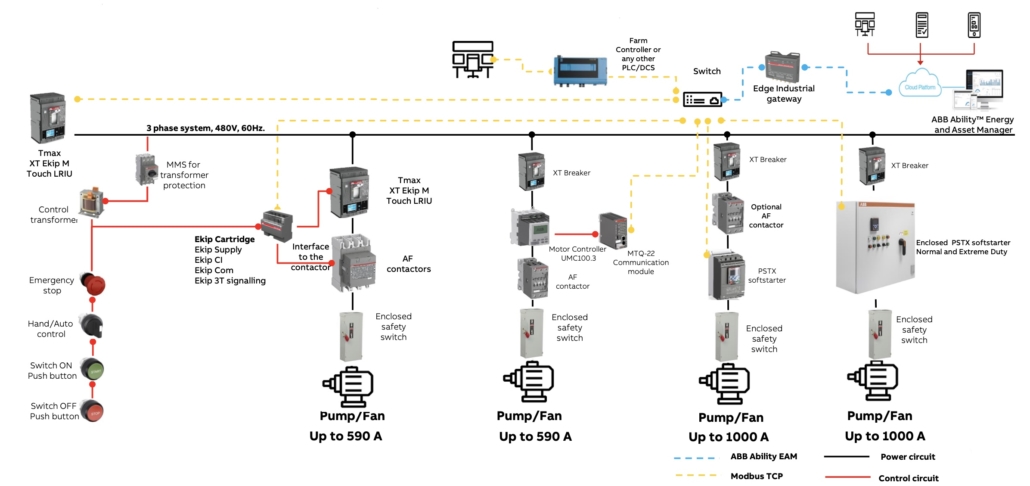The three levels of motor-starting controls
Providers of many products and services have long classified offerings as “Good, Better, or Best” to help guide buyers. That three-tier classification also works well for panel builders designing motor starting systems.
Anyone who used to buy Craftsman tools at Sears will recall that, for most of their commonly used tools, you had the option of “good, better, or best”. It’s a handy framework for helping guide buying decisions of not only tools but any product that comes in a range of quality levels.
The “good, better, best” classification is also valuable when considering the appropriate configuration of 480 V, 3-phase motor-starting systems. The decision-making process for these systems has far more variables to consider compared to selecting a wrench or drill, but the three-level framework is still a good way to scope your system design and begin to identify the optimum components to meet your needs.
Regarding motor starting systems, it might be better to replace the terms “good, better, best” with Essential (basic protection), Enhanced (increased monitoring and protection), and Advanced (the most-capable and future-ready). Each of the higher levels includes the capabilities/functions of the lower level(s), building on their foundation with additional features and functions.
In addition to the need for specific features or functions, another factor that drives control panel builders to the more-capable control systems is amperage. At the lower amperages, Essential- or Enhanced-level system are appropriate, although even at 590 A, an Essential system may be all that’s needed. But at amperages higher than 590 A, Advanced-level systems are probably required.
Essential
Most standard motor-starting applications just need the combined functions of: branch circuit disconnect means, short-circuit protection, motor overload protection, and control of one motor branch circuit (Figure 01). Standard applications can include most pumps, fans, and conveyors, as well as other standalone electric motor-driven equipment.
In addition to the required buttons, controls, and indicators, every motor starting system requires short circuit protection that can be provided by a molded-case circuit breaker, fuses, or manual motor starter. An enclosed safety switch at the motor is also required to enable quick and easy motor disconnect.
Current in a simple system may be controlled by either a contactor or softstarter. The choice between the two is driven by how the motor is used. Motors that operate more or less continuously require only a contactor. They are a simpler and less expensive component than the softstarter, but deliver full current at startup, which can create wear and tear on the motor if used excessively.
Softstarters give control over current, torque, and perhaps most importantly, acceleration. For applications where the motor is regularly cycled on and off, the softstarter ramps up the current gently. In operation, the softstarter can adjust to the needs based on multiple variables, delivering only the required current. This reduces energy use, and the related costs, to the minimum required and can greatly extend motor life.

01 Essential starting solutions. Typically covers requirements for stand-alone machinery like pumps and fans.
Enhanced
Enhanced systems enable panel builders to provide a more tailored solution while helping provide increased safety and protection for personnel and equipment (Figure 02). This is accomplished by incorporating sensors and/or additional protective devices, such as thermistor motor-protection relays or phase- or voltage-monitoring relays.
These sensors can detect events like under- and over-voltage that can affect process performance, helping avoid unexpected shutdowns and reducing downtime. Increased system or process reliability is the fundamental reason for investing in an Enhanced-level of protection. More-critical applications, where the failure of a motor could disrupt a critical process, require features and functions beyond what’s provided at the Essential level.

02 Enhanced starting solutions. Robust protection with enhanced safety, control and monitoring.
Advanced
The Advanced level builds on the capabilities of an Enhanced-level system with the addition of digitalization (Figure 03). The motor starting system gains the ability to alert process and maintenance managers about any problems. Now, rather than sending a technician to the site of a fault to diagnose the problem by checking an HMI or local display, the needed data is available via the cloud to anyone with the appropriate access rights and credentials.
And you don’t just learn that a circuit breaker tripped; you have information at your fingertips about what caused the trip. Whether it was an arc flash, locked motor, overload, or other issue, you instantly understand the problem and can more quickly dispatch the appropriate personnel to restore operations. This level of control and monitoring is generally only needed for the most-critical applications, where downtime must be reduced to the lowest levels possible.

03 Advanced starting solutions. Get ahead with smart data and predictive applications, to keep your pump or fan system running.
Tools
Awareness of these three levels is helpful when concepting a motor starting system. Still, selecting the specific components can be challenging. Control-panel-device OEMs and distributors help simplify the process with various reference documents and configurators.
ABB, for example, provides two online tools. The ABB Motor Starting and Protection Selector lets panel builders search for both open-style components and enclosed equipment. Enter your specification requirements (or if you have a Baldor electric motor you can simply enter the part number) and the tool responds with a full list of possible device part numbers.
The ABB Selected Optimized Coordination Tool is similar, but returns more tested combinations and the required cables. In addition to the ABB UL file number for the combinations, the tool identifies a general product range, but not specific part numbers. Both can be helpful in designing a starting solution.
Choose your level
As you move from the Essential to Advanced levels, something to consider is that the added system sophistication means more devices which means more panel space. Where compact panels are required, panel builders may have to scale back on the number of components and level of panel capability.
Of course, as the level of the motor starting system capabilities increase, so does the cost. Those higher costs, though, are easily offset by the value the system returns. For basic systems, and applications where downtime doesn’t create a major problem, the simpler, lower-cost Essential-level system will serve your needs well, but in motor starting that require more-sophisticated features and functions, the added cost of an Enhanced or Advanced design is more than recovered in reduced risk to people, processes, and assets.
_
Berea Janzen
Product Marketing Manager
Bill Hilliard
Product Marketing Manager





